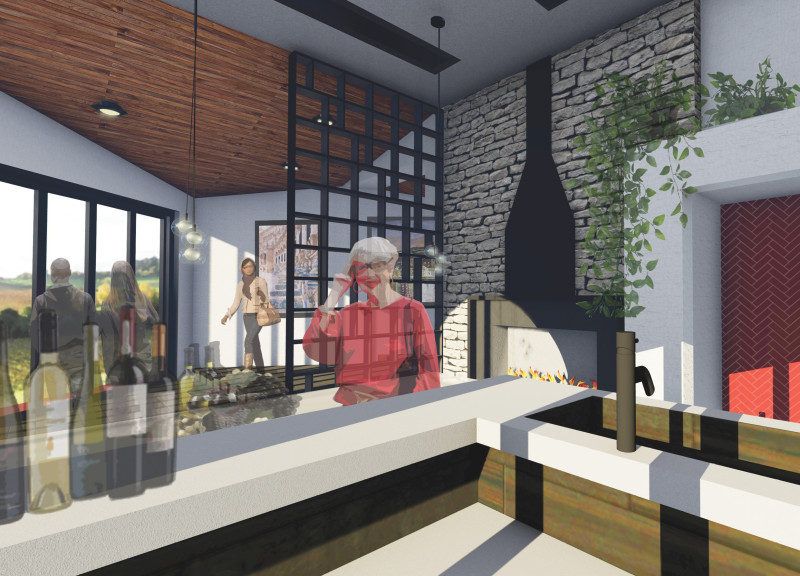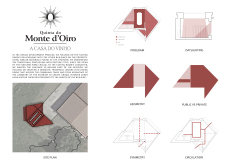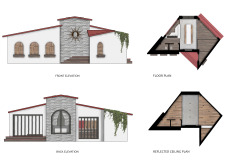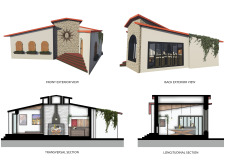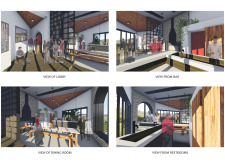5 key facts about this project
Quinta do Monte d'Oiro, known as "A Casa do Vinho," is situated within a vineyard landscape, focusing on the relationship between the tasting room and nearby buildings. The design combines traditional Portuguese styles with a modern touch, creating a space that serves both practical and visual needs. Visitors are encouraged to engage with the surroundings, and the concept highlights the significance of connecting the interior with the vineyard.
Integration with Landscape
The main purpose of the design is to create a strong connection between indoor spaces and the vineyard outside. Large openings in the tasting room allow visitors to enjoy views of the landscape. This layout not only brings nature indoors but also enhances the experience of being in the vineyard. The architecture promotes appreciation for the site’s beauty.
Spatial Organization
A notable feature is the large threshold leading into the communal dining room, which is intended for social gatherings. A central communal table acts as the focal point for interaction among visitors. This open arrangement encourages communal dining, while distinct interior zones are formed around the central hearth of the building. The design allows for a variety of uses and experiences in the space.
Circulation and Functionality
Attention is paid to how people move through the building. The circulation paths are designed to make it easy for visitors to travel between the tasting, dining, and social areas. This layout enhances functionality and ensures a logical flow. There is a careful balance between public and private spaces, allowing for both larger gatherings and quieter moments. This thoughtful arrangement supports a range of visitor interactions.
Material Selection
Materials used in the construction connect to local traditions while offering a modern expression. Elements similar to those found in the vineyard strengthen the link between the building and its environment. This choice helps root the project in its geographical and cultural context while supporting the overall theme of wine culture.
Light plays an important role in the design. Natural light filters through openings, creating a warm and inviting atmosphere. This design choice enhances spatial perception, making the tasting and dining areas feel open and welcoming. As visitors move through these spaces, they are enveloped in a comfortable environment that complements the vineyard setting.


